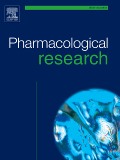
“Cannabis extracts have a wide therapeutic potential but in many countries they have not been approved for treatment in children so far.
We conducted an open, uncontrolled, retrospective study on the administration of dronabinol to determine the value, efficacy, and safety of cannabis-based medicines in the treatment of refractory spasticity in pediatric palliative care.
Sixteen children, adolescents and young adults having complex neurological conditions with spasticity (aged 1.3-26.6 years, median 12.7 years) were treated with dronabinol by our specialized pediatric palliative care team between 01.12.2010 and 30.04.2015 in a home-care setting. Therapeutic efficacy and side effects were closely monitored.
RESULTS:
Drops of the 2.5% oily tetrahydrocannabinol solution (dronabinol) were administered. A promising therapeutic effect was seen, mostly due to abolishment or marked improvement of severe, treatment resistant spasticity (n = 12). In two cases the effect could not be determined, two patients did not benefit. The median duration of treatment was 181 days (range 23-1429 days). Dosages to obtain a therapeutic effect varied from 0.08 to 1.0 mg/kg/d with a median of 0.33 mg/kg/d in patients with a documented therapeutic effect. When administered as an escalating dosage scheme, side effects were rare and only consisted in vomiting and restlessness (one patient each).
No serious and enduring side effects occurred even in young children and/or over a longer period of time.
CONCLUSIONS:
In the majority of pediatric palliative patients the treatment with dronabinol showed promising effects in treatment resistant spasticity.”








